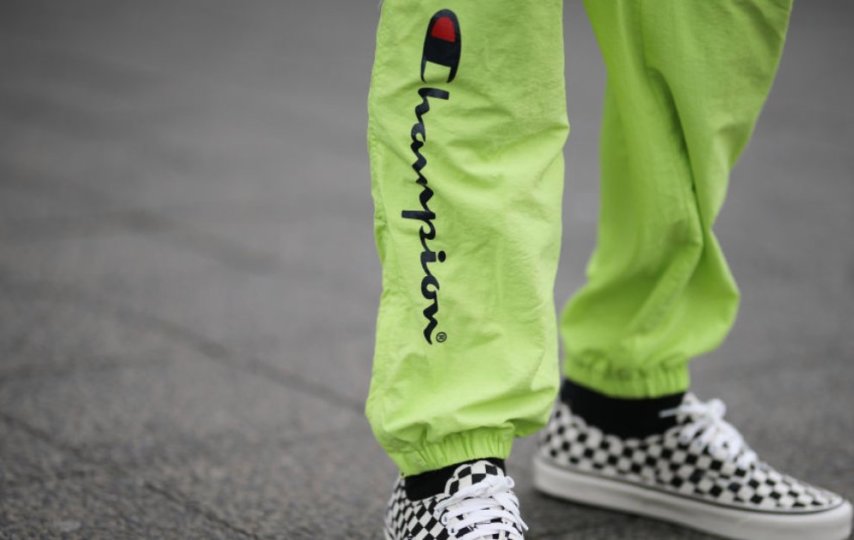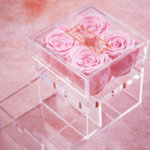Since the 19th century, sportswear styles have steadily been crossing over to become casual, everyday clothing for men, women and children. This trend goes back a long way from contemporary athleisure to sneakers, sweatshirts, sweatpants, polo shirts, sports jackets and even shorts. Learn how athletic styles and more recent athleisure looks such as bicycle shorts, leggings and custom athletic socks have become mainstream clothing over the decades.
The Rise of Sneakers
The development of vulcanized rubber in 1839 led to the use of this durable and springy material in athletic shoes. The first commercial sneakers were plimsolls or trainers released by U.S. Rubber in 1916. These classic designs live on in simple sneaker styles that combine canvas or leather uppers with rubber soles. Sneakers are typically worn with athletic socks, but some styles can be worn without socks.
In the early 20th century, the most popular sneakers were basketball shoes. Indiana basketball player Chuck Taylor endorsed Converse All Star basketball shoes in 1923. Before long, Hollywood stars were being photographed sporting sneakers and this shoe style became a fashion staple. Nearly 100 years later, sneakers are still some of the best-selling shoes. This athletic footwear is a casual staple that can also provide a stylish counterpoint to formal outfits.
Tennis Shirts and Polo Shirts
The fitted and collared shirt style referred to as a polo shirt originated as a tennis shirt. Rene Lacoste, a French Grand Slam tennis champion, developed a short-sleeved cotton shirt with a starched collar and several buttons that could be fastened or unfastened to allow for a more comfortable fit. The collar of these shirts could be turned up to protect the wearer’s neck from sun exposure.
English fashion houses marketed this shirt style to polo players. This branding made its way back to the United States when Ralph Lauren founded his fashion line during the 1970s and popularized shirts embroidered with the figure of a polo player. Today, polo shirts are designed for men and women and often come in a wide variety of bright colors. A popped collar has become more of a style statement than a functional feature. Polo shirts are worn for active, casual or workplace wear and can also be dressed up for formal occasions.
Sweatshirts and Sweatpants
In the 1920s, the quarterback for the Alabama Crimson Tide Football team wanted an alternative to the team’s uncomfortable practice jerseys. Benjamin Russell Jr. and his father began making a new collarless pullover based on a ladies’ union suit top. The Russell Athletic Company began to focus primarily on producing sweatshirts. In France, Emile Camuset had recently started selling knitted gray jersey pants that came to be known as sweatpants.
By the middle of the 20th century, sweatshirts were being popularized as stylish garments and status symbols by universities. Sweatshirts in school colors and printed with school names or logos became mainstream. Sweatpants also continued to be a comfortable option for active and leisure wear. When worn together, a sweatshirt and sweatpants form a sweatsuit. Make this outfit complete with matching or contrasting custom athletic socks. This style has become more popular with athletic brands and in celebrity style collaborations.
Comfortable Women’s Clothing
Historically, women’s clothing has often emphasized unnatural standards of beauty that required bodily modification. Restrictive corsets and girdles and practices such as foot binding caused discomfort and could result in deformation over time. In the twentieth century, the rising popularity of athletic activity led to the creation of sportswear for women. These functional garments tend to conform to the wearer’s body rather than forcing the body to conform to a particular shape.
Shorts originated as athletic garments for men and were considered controversial for women to wear even as late as the 1950s. The development of flexible fabrics made it easier to produce garments such as sports bras, tights, leggings, bicycle shorts and yoga pants. Comfortable and versatile styles that originated in gyms, dance studios and yoga studios have crossed over into mainstream women’s clothing.
Textile Technology
Innovations in textile design in the 20th and 21st centuries have played a major part in making activewear more comfortable and stylish. Research into synthetic thermoplastic polymers started in the late 1920s and products made of nylon hit the market in the 1940s. Lycra, which enhances the inherent stretch of fabrics, was invented in 1958. Waterproof, breathable Gore-Tex followed in 1969. All of these technical fabrics are mainstays in athletic clothing that many people wear for general use.
Sportswear began incorporating high-tech materials for a comfortable, body-responsive fit with moisture-wicking and odor-reduction properties. Many consumers seek the same performance properties for casual clothing. Sportswear basics that feature these fabrics are worn alone or layered for comfortable and functional style. A number of companies have begun to produce athleisure styles that feature these fabrics in cuts, colors and styles that can be worn for activity and relaxation.
Functional Clothing Design
The recent athleisure trend in clothing, footwear and accessory design for men, women and children prioritizes functionality. These garments are not necessarily selected with active or casual wear in mind, but for their usefulness in a variety of circumstances. In some cases, wearing athletic pieces eliminates the need to carry a change of outfit for transitioning between desk work, physical activity and relaxation.
Athletic clothing was initially intended for wear during particular activities. The rise of commercial mass production in the early-to-mid 20th century led to the popularization of garments associated with sports that have the effect of making a person appear athletic. Today, athleisure pieces and outfits are designed for exercise and casual wear. There tends to be less idealization of active looks than a desire for the comfort and ease of wear provided by clothing that can be worn for exercise or leisure.
These are a few examples of sportswear items that have become wardrobe mainstays and fashion pieces. Many designers and celebrities have embraced athleisure as a stylish and functional approach to fashion. Recent trends favor activewear and accessories such as custom athletic socks that use comfortable materials in practical designs.



